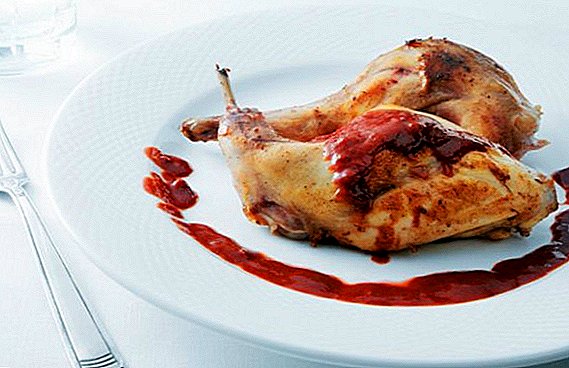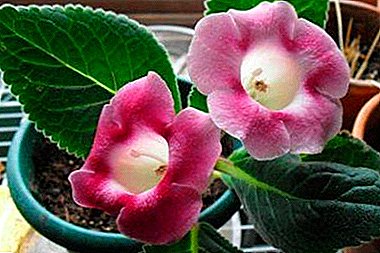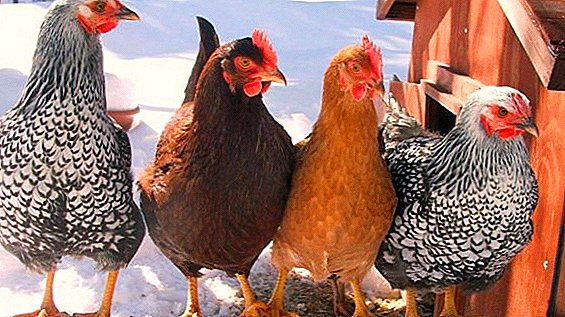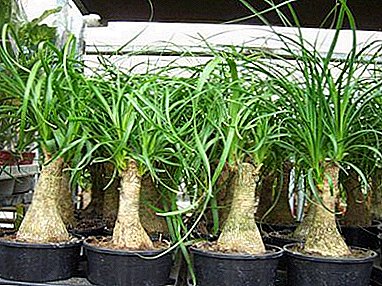 The captive way of raising rabbits is considered the most humane in relation to animals.
The captive way of raising rabbits is considered the most humane in relation to animals.
Fresh air, space and the sun's rays will appeal to any animal.
We invite you to find out more information about this method of rabbit breeding, as well as try to make a spacious enclosure for eared pets with your own hands.
General requirements for rabbit enclosures
To make your pets comfortable to live in a new place, when building an open-air cage, you should follow the general rules:
- Construction of the structure on a hill. This will help you avoid flooding due to heavy precipitation.
- In the aviary should be quite spacious for the free movement of animals.
- The height of the walls is at least one meter. Rabbits love to conquer new heights and will definitely try to jump over the fence - it is important not to let them do it.
- At least one side in the aviary should be made of mesh. Despite the fact that you can use any available material for the construction of walls (sheets of chipboard and plywood, slate), it is best to use a metal grid that will not prevent the penetration of sunlight and fresh air into the cell.
- The presence of a small canopy, under which animals can hide from the rain.
- If you plan to fill the floor with concrete, then before you populate the rabbits, it is necessary to cover it with a thick layer of hay and sawdust. This litter should be regularly updated.

Layout and size calculation
An important step in preparing for the construction of the enclosure is the miscalculation of its size. The crowding of animals in one area is often the cause of their poor health, crush or fights among males.
Important! Do not use bitumen mortar when building enclosures. This material does not allow air at all, which can cause decay processes in your building.
Calculate the total area so that each adult has 1-1.5 square meters. m. In addition, after installing the feeders and drinking bowls, in the aviary should be enough free space for long games of Fuzzies.
And the drinkers are best to install a few and place them in different corners - this will help avoid crowding among animals.
Did you know? The only place on earth where rabbits do not like is Australia. Wild rabbits living on the territory of this country each year cause a multimillion-dollar damage to agricultural land, eating all the crops and the harvest of farmers. In Queensland, local authorities even imposed a fine, which all rabbit lovers must pay as pets.
Necessary materials
To build an enclosure you will need the following materials:
- the chain-link grid: the recommended cell size is 10x10 cm, the grid width is 1.5 m;
- wooden beam - 4 pcs .;
- a mixture of cement, crushed stone and sand;
- nails or wire.

Tools for work
Tools that are needed for the construction of an aviary, can be found in almost every master:
- shovel;
- saw;
- hammer.
It will also be useful for you to learn how to make a feeding trough and a drinker, a shed, a cage, a sender with your hands for rabbits
Step-by-step instruction
Once you have found the perfect place for the rabbit pens, and all the materials and tools have been prepared, you can start building it.
We have prepared step-by-step instructions for you that will make the whole process simple and clear to any rabbit breeder:
- Let's start with a concrete screed floor - so you protect your rabbits from escaping through earthen excavations. Dig a shallow ditch around the perimeter of the territory - about 30-35 cm deep - and fill it with sand. Cover the sand with a net with a rabbit, it should completely cover the entire area of the future aviary. In a deep container, mix all the ingredients for the concrete screed - cement, crushed stone and sand in a ratio of 1: 3: 5. Fill the grid with the prepared concrete mix, a depth of 5 cm will be sufficient. After the screed has dried, pour the foundation pit with a thick layer of sand (at least 50 cm).
- Next step - installation of bars. If there is a need, using a saw, cut the wooden bars you need sizes. At a distance of 1.5-2 m dig holes, which will then be installed support columns. Put a small layer of rubble or claydite on the bottom of the pit, and coat the ends of the boards with linseed oil - this will help protect the wood from rotting. After installing the supports in the prepared pits, fill them with a large amount of soil and tamp it down. Instead of soil, pouring concrete is allowed.
- The final stage of building an open-air cage for rabbits will be netting installed bars and its fastening to them with nails or wire.

It is very convenient to create small houses in a rabbit open-air cage in which male producers will live, which should be kept separate from the females. This dwelling is also useful for pregnant rabbits who need privacy when carrying babies.
Houses can be purchased at the pet store, and you can build your own hands. We offer you to build your own comfortable housing for eared pets.
You will need the following materials and tools:
- boards;
- Rabitz;
- nails;
- polystyrene foam;
- mineral wool or any other thermal insulation material;
- ruberoid;
- hammer;
- saw;
- shovel.
How to make an open-air cage for rabbits out of a chain-link netting: video
Step-by-step process of creating houses:
- Using a saw, cut the boards of the sizes you need and join them into a U-shaped construction. Using nails and a hammer, attach them to each other.
- Dig a small depression and install a U-shaped construction into it from the boards, sprinkle the walls with earth.
- Inside the construction, lay the floor with a grid and fill it with polystyrene foam.
- Inside, cover the walls with mineral wool or polystyrene foam - such insulation of the dwelling will not allow the rabbits to freeze in the cool time of the day. After that, sheathe the walls with another layer of boards.
- From the grid, make a gate that is attached to one of the walls with nails. Striking can be a nail or a piece of wire. Please note that each animal must have a separate entrance to its house.
- Place a sheet of ruberoid on the top of the structure.
Important! Do not build dwellings for rabbits near poultry houses. Poultry can become carriers of diseases that pose a great danger to rabbits. Due to the weak immunity of eared pets, most often these diseases become fatal.
What should be inside the enclosure
After you have made a spacious enclosure for your eared pets with your own hands, the time has come to use its internal space wisely.  Make sure that the rabbits have a capacious feeder, which will always contain freshly prepared food - hay, chopped vegetables, freshly cut grass, as well as various mineral supplements and vitamin complexes.
Make sure that the rabbits have a capacious feeder, which will always contain freshly prepared food - hay, chopped vegetables, freshly cut grass, as well as various mineral supplements and vitamin complexes.
Learn how to feed the rabbits, in particular in winter, and whether it is possible to give the rabbits corn, nettles, bread and crackers, burdocks, wormwood, beets.
Install drinkers, better a few. Experienced breeders advise to fix all inventory inside the enclosure - drinkers and feeders will not roll over to the floor and food will not be mixed with bedding and animal waste.
Care of the aviary
Maintaining cleanliness in the aviary and regular cleaning of houses is the main prevention of most diseases in rabbits.
Did you know? A couple of centuries ago, a herd of rabbits was released on uninhabited islands so that in the event of a shipwreck, the surviving crew members could get their own food.
To avoid reproduction of harmful microorganisms, disinfect the enclosure every week.  For this purpose, they use both special veterinary drugs and popular methods, for example, a decoction of dried leaves of a camel thorn, a perennial plant known for its antimicrobial action.
For this purpose, they use both special veterinary drugs and popular methods, for example, a decoction of dried leaves of a camel thorn, a perennial plant known for its antimicrobial action.
Do not forget also to regularly replace the water in the drinkers. Pay special attention to inspection of the litter on which your rabbits walk. Every few days, add fresh grass or hay, and throw out old and soiled bedding.
Remember that the kitchen utensils you use to prepare your pets also need regular disinfection.
Breeding rabbits in an open-air cage has a lot of advantages: animals improve their appetite and mood, and the constant physical activity in the open air has a positive effect on the eared immune system.












